I cannot state enough the importance of understanding soil, plant and water relationships when growing a crop. In our sector’s case the plant is of course predominantly grass, that provides the majority of our natural grass playing surfaces in this country.
It is generally at this time of the year that we start to see most of our problems in trying to maintain a decent level of grass cover throughout the winter months. Once soil and air temperatures dip below 5 degrees our grass plants tend to stop growing, therefore it becomes harder to retain grass cover on our winter games pitches.
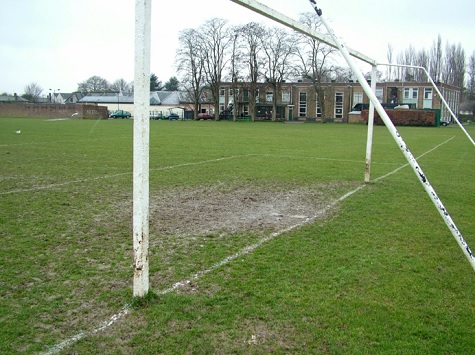
Understanding the condition and what underlying soil type you have, will essentially dictate what you can achieve in terms of maintaining a healthy amount of grass cover throughout the winter months.
Our soils are a very precious commodity. It is a fact that erosion and soil losses are being recorded at an all-time high, and it has been said that in the last 170 years 84% of fertile soil has been lost from farming land. Protecting soils is vitally important and maintaining healthy grass cover will be vital in preventing soil erosion.
We must be more careful in the treatment of our soils. It usually takes around 1000 years to produce an inch depth of topsoil by natural weathering processes. We can move literally tonnes in a matter of minutes using modern earth moving machinery. We must be more aware of the consequences of eradicating our precious soil resource.
Knowledge and understanding of soil’s physical properties has always been important for professional turf managers when making decisions about maintenance operations and when carrying out reconstruction works. Precise soil knowledge, including information on boundaries between soil types, should result in more efficient use of fertilisers, pesticides and improved management practices, thus ensuring that the final managed outputs result in the production of safe, consistent, playable natural sports turf surfaces.
Soils can vary in many ways, both physically and chemically on a local or regional scale. Many factors, including original parent material source, climate, weathering processes, topography or history of the land use, influence their properties. This soil variability gives rise to all the different soil types universally classified by soil texture composition. Soil composition (soil texture) is determined predominantly by mineral particles and organic matter content and can be classified by the percentage of sand, silt and clay mineral particle content.
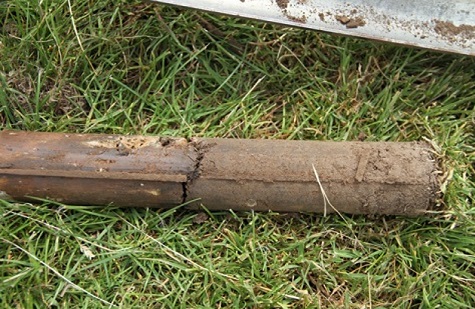
The strength and permeability of any soil is determined by its structure, soil type, drainage capacity and how well it is managed. Soils will perform differently governed by the amount of water, root mass and air there is in the soil matrix.
Determining soil texture can help you learn about possible restrictions and advantages of the soil. Soil texture is related to weathering and the parent material. The three basic texture classes are sand, silt, and clay, though many soils are a combination of these textures.
In the UK we have at our disposal several organisations that can help us identify what soils we have. One of them is the UK Soil Observatory that provides a soil mapping service that helps identify the predominant parent material soil by geographical location. However, taking a few localised soil samples from your pitches will easily identify your soil type. Once you have taken some soil samples and sent them off for analysis you will need to test for particle size and nutrient status.
Once you have determined your soil type based on the soil results of giving you a percentage of clay silt and sand using a soil textural triangle, you can identify what type of soil you have and how best to manage and maintain it to sustain plant growth.
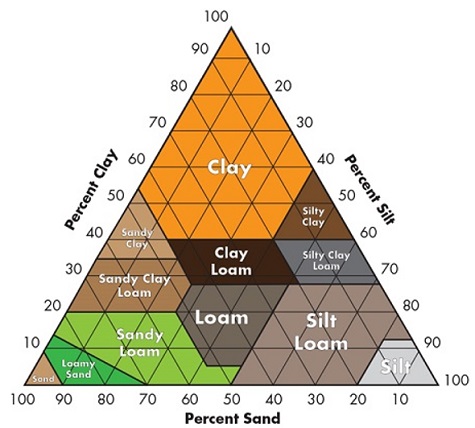
The Soil Texture Triangle, as shown above, helps us classify the soil type. These percentages are determined by undertaking a PSD, particle size distribution analysis.
The definition of soil texture is the relative proportion of sand, silt or clay in a soil. The terms sand, silt, and clay refer to relative sizes of the soil particles - sand, being the larger soil particle, feels gritty; silt, being moderate in size, has a smooth or soapy texture; clay, being the smaller size feels sticky.
Topsoils are complex arrangements of mineral particles, air, water, organic matter, living organisms and nutrients. The proportion of these elements is not always critical, however it is important that a soil contains all these elements in one form or another.
Topsoil is a major component of almost all natural sports turf facilities, the exception being pure sand constructed facilities. Its primary role is to provide a medium for grass growth that is both sustainable and stable. This sustainability and strength only comes about when the soil has a good structure.
The four major components of soil are air, water, mineral matter and organic matter. The relative proportions of these components greatly influence the behaviour and productivity/performance of the soils.
Saturation
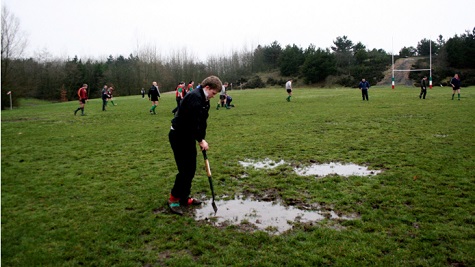
Most winter games pitches will now be at field capacity and any more rain is likely to tip the balance, especially on non-drained pitches, causing them to become saturated / waterlogged. Once in this state they are prone to damage either from play and training or indeed from trying to carry out maintenance tasks.
Pore spaces, particularly in soil dominant pitches, will be filled with water (saturated). Playing on saturated pitches will certainly result in surface damage. Soils, when saturated, lose their stability and strength. The action of players running, stopping, sliding and turning in studded or bladed boots will result in surface damage. The severity of the damage will be dependent upon the soil type and the ability of the top 100mm to drain quickly.
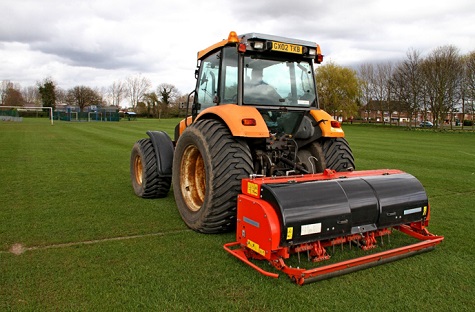
To help keep the top 100mm free draining, a programme of surface aeration is necessary. This is achieved by regular spiking with slit tines to a depth of 150mm or more when conditions allow. There are specialist machines that can help with improving surface drainage, for example the versatile tractor mounted Verti-Drain machine and linear aerators have been around for many years and continue to do a good job of decompacting pitches down to a depth of 200mm. In recent years we have seen the development of a lot of compressed air aided machines such as the Sisis Javelin Aer-Aid 1500, AirG2, GP Air machine, OxyShot and The Airter to name a few that can aerate to greater depths.
The GP Air machine is a variable depth pedestrian ground aerator, blowing compressed air in 4 directions into the ground.
The Air 2G2 is a self-propelled hydrostatic drive three probe air injection machine, injecting compressed air to either 175mm or 300mm deep (depending upon probe fitting). This causes a fracturing effect of the compacted rootzone, with no surface disruption. The Air-2G2- machine can be used for a variety of pitches including bowling greens, golf courses and rugby pitches among others, as part of sports ground maintenance routine.
The Airter light 14160 is a completely redesigned pneumatic soil aeration device for professionals, which loosens the lawn root zone homogeneously to a depth of more than 22 cm and supplies it with fresh oxygen.
The Charterhouse OxyShot Air-Injection Unit has a single probe which is available in two diameters, the machine is compact and manoeuvrable allowing access to difficult to reach areas. The OxyShot probe blasts air in 4 directions at variable pressures to a depth and duration that the operator requires down to a maximum of 500mm using the 25mm diameter probe, thus lifting, expanding and de-compacting the soil.
Javelin Aer-Aid 1500 machine is a specially designed tractor mounted vertical action aerator for use on both fine and outfield turf. The Aer-Aid system injects air directly into the root zone speeding up the aeration process, moving air uniformly throughout the root zone for complete aeration – not just where the tines have penetrated. The cam trigger mechanism ensures that the air is always expelled at the bottom of the tine penetration enabling treatment to be targeted precisely.
All these machines can offer a different method of decompaction and the results will be defined by how well the machine has been used and the experience of the operator. Also, the timing of when the work is done will also have a bearing on its success.
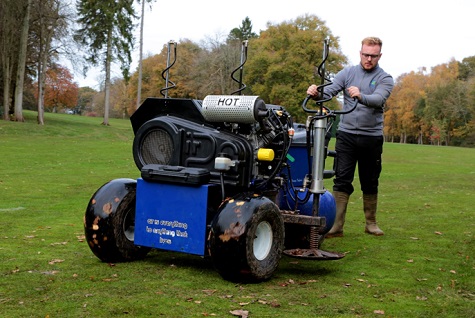
Depending on the severity of the compaction, it may well take more than one operation to achieve the desired results. Many more sports grounds are beginning to use these types of aerators on a more regular basis, say between 2-3 times a year. Several sports facilities are now utilising all three methods (Verti-Drain, linear and air compressed) aeration methods to relieve compaction on their playing surfaces.
The months of October / November and March tend to be the busiest periods for aeration work on most sports facilities when the ground conditions are favourable. However, if you have a fully drained pitch, aeration work can be done virtually any time of the year.
Most golf clubs tend to aerate their fairways during the autumn to help improve their playability during the winter months